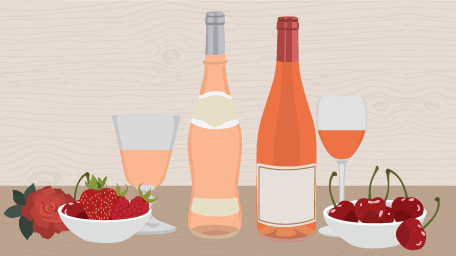Rosé wine has long lived in the shadows of some of the more traditional red and white varieties. Even well-made rosés were disregarded as thirsty drinkers assumed those pink wines would taste sweet, seem poorly made, or both. Luckily for rosé lovers, those days are long behind us. It can now be argued that no wine is as sexy as rosé.

Contrary to some beliefs, rosé is not made by mixing red and white wines together. It is usually made one of two ways. The first method is the saignee (“bleed”) method. For saignee rosés, some of the juice when making a red wine is “bled” off. This approach is often looked down upon, but technological advancements have made the ominously named saignee process a viable way to create dangerously easy-to-gulp rosé wines.
However, arguably the best rosés are the varieties that are planned from the ground up. In those cases, the grapes are farmed and picked to emphasize pithy acidity and then pressed with light skin contact to emphasize color and fruitiness. Thankfully, these rosés can still be affordable, though rare versions can fetch $100 per bottle.

Below are five rosé varieties you need to try.
Whether you’re looking for a light, floral rosé, or a full-bodied almost red variety, next time you go to grab a bottle, think pink! You won’t be disappointed.
Joe Roberts is a certified wine specialist. Joe is known for creating 1 Wine Dude, a wine blog aimed specifically at the intermediate wine lover. In 2009 his blog was named Best Wine Blog by FoodBuzz Blog Awards and again in 2010 by Wine Blog Awards. Follow him on Twitter!
Curious what happens when you give a “bro” rosé? It’s magic. Here’s our “Brosé Video”.